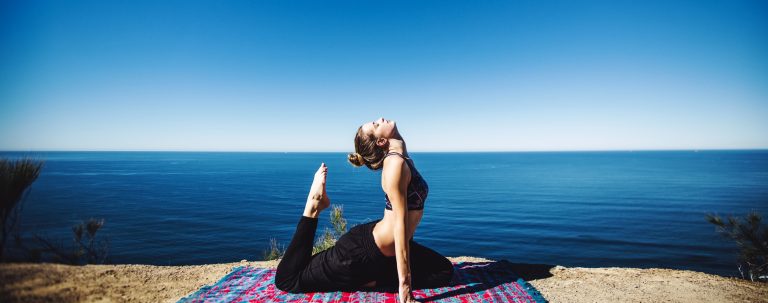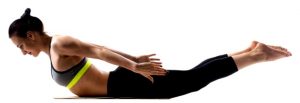
Indian texts are “notoriously difficult to date”. The table shows the approximate date and abbreviated title of the earliest document or authority to describe that asana (not only naming it), as follows:
DU = Darshana Upanishad, c. 4th century
AS = Ahirbudhnya Saṃhitā, c. 7th century
PSV = Pātañjalayogaśāstravivaraṇa, 8th century
V = Vimānārcanākalpa, 10th century
GS = Goraksha Sataka, 10th century
HY = Hemacandra‘s Yogaśāstra, 11th century
VS = Vasishtha Samhita, 13th century
ShS = Śiva Saṃhitā, 14th century
HYP = Haṭha Yoga Pradīpikā, 15th century
GhS = Gheraṇḍa Saṃhitā, 17th century
BaH = Bahr al-Hayāt, 17th century
HR = Haṭha Ratnāvali, 17th century
JP = Joga Pradīpikā, 18th century
HAP = Hațhābhyāsapaddhati, 18th century
ST = Sritattvanidhi, 19th century
TK = Tirumalai Krishnamacharya, c. 1940
TB = Theos Bernard, 1950
LoY = Light on Yoga, 1966
PL = Post-Light on Yoga
The asanas are here named in English, spelt conventionally as in English books on yoga without diacritics, to facilitate free text search through the list using the ‘Find in page’ box (Control-F in many browsers).
English | |
Downward-Facing Dog | |
Downward-Facing Tree, Yoga Handstand | |
Shooting bow, Archer, Bow and arrow | |
Crescent Moon | |
Half moon | |
Eight-Limbed Salutation Caterpillar | |
Aṣṭāvakra‘s pose, Eight-angled | |
Baddha Konasana/ Bhadrasana | Bound angle,Cobbler’s pose |
Crane (arms straight), Crow (arms bent) | |
Child | |
Bhairavasana/ Ankushasana | Formidable |
Bharadvaja‘s twist | |
Frog | |
Cobra | |
Arm-pressing posture | |
Bidalasana / Marjariasana | Cat |
Four-Limbed Staff Low Plank | |
Staff | |
Bow | |
Durvasa‘s Pose | |
Embryo in Womb | |
Cow-faced | |
CowherdGorakhnath‘s pose | |
Hanuman‘s Pose | |
Head-to-Knee | |
Belly twist | |
Pigeon | |
Ear-pressing | |
Kaundinya‘s pose | |
Heron | |
Cockerel | |
Tortoise | |
Pendant | |
Crocodile | |
Garland | |
Frog | |
Marichi‘s Pose | |
Fish | |
Lord of the Fishes Matsyendra‘s pose | |
Peacock | |
Liberated | |
Lord of the Dance Nataraja‘s Pose | |
Navasana/ Paripurna Navasana Naukasana | Boat,Full Boat |
Lotus | |
Gate | |
Side angle | |
Intense side stretch | |
Noose | |
Seated Forward Bend | |
Feathered Peacock | |
Wide Stance Forward Bend | |
King Pigeon | |
Locust | |
Shoulder Stand | |
Side splits | |
Corpse | |
Shoulder supported bridge | |
Siddhasana (men)/ | Accomplished, The Adept’s Pose |
Lion Pose | |
Shirshasana/ Kapalasana | Headstand,Yoga Headstand |
Easy | |
Big toe supine | |
Reclined hero | |
Salute to the Sun | |
Auspicious Lucky mark | |
Mountain | |
Firefly | |
Trikonasana / Utthita Trikonasana | Triangle |
Trivikramasana/ Supta Trivikramasana | Trivikrama’s pose Standing splits/ (reclining variant) |
Balance / Scales | |
Open Angle | |
Upwards-facing bow, Wheel | |
Upward-Facing Dog | |
Camel | |
Awkward or Powerful | |
Standing Forward Bend | |
Standing Big Toe Hold (I: leg to the side; II: leg to the front) | |
Thunderbolt | |
Vasishta’s pose, Side plank | |
Inverted Staff | |
Viparita Karani/ Uttanapadasana (variant) | Inverted practice Legs up the wall |
Reversed Warrior | |
Warrior I | |
Warrior II | |
Warrior III | |
Virasana/ Dhyana Virasana | Hero, Hero’s Meditation |
Tree | |
Scorpion | |
Yoganidrasana/ Pasini Mudra | Yogic sleep Noose Mudra |
(ASANAS With Dual Body Part Names)
Eka Pada Shirshasana | Single Leg Headstand |
Mukta Hasta Shirshasana | Free Hands Headstand |
Parivrttaikapada Shirshasana | Single Leg Revolved Headstand |
Parshvaikapada Shirshasana | Single Leg Headstand |
Utthita Hastapadangusthasana | Standing Big Toe Hold by Hand |
NOTES
- ^ 84’s symbolism may derive from its astrological and numerological properties: it is the product of 7, the number of planets in astrology, and 12, the number of signs of the zodiac, while in numerology, 7 is the sum of 3 and 4, and 12 is the product, i.e. 84 is (3+4)×(3×4).[4]
- ^ PL, Post-Light on Yoga poses, are marked as ’21st C.’ to sort late 20th as well as 21st century asanas after TK and LoY.
- ^ Sjoman notes that the names of asanas have been used “promiscuous[ly]”, making their history difficult to trace: the presence of matching names is not proof of continuity, since the same name may mean a different pose, and a pose may have been known by other names at different times.[5] The dates here are therefore based on documents which provide actual descriptions of the asanas.
- ^ The Yin Yoga variants are similar but not identical to their ‘Yang’ equivalents.[13]
- ^ GhS uses the name Garuḍāsana for a different pose.
- ^ Not yet yoga in 1896 as Jhūla pose in Vyayama Dipika gymnastics book[85]
- ^ LoY has the legs as in Gomukhasana, not in Padmasana.[86]
- ^ LoY quotes and interprets GhS 2.40 as meaning a variant of Salabhasana, the legs stretched out and raised, the arms as GhS states on the head, also raised;[88] Saraswati has the head supported with elbows on the ground;[87]a a widespread modern form has feet and head on the ground.
- ^ Several sitting meditation poses have been called Muktasana.
- ^ Viparita Karani is an inverted practice rather than an asana; the ShS, HYP and GhS descriptions suggest the actual posture used was a headstand.
- ^ This is a well-documented example of a post-Light on Yoga (1966) pose, created as a variation of the 20th century Warrior poses. Hundreds of less common variations of other poses have been created in the same time frame.





